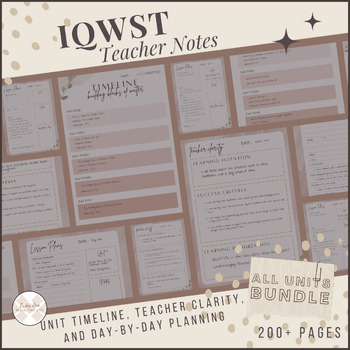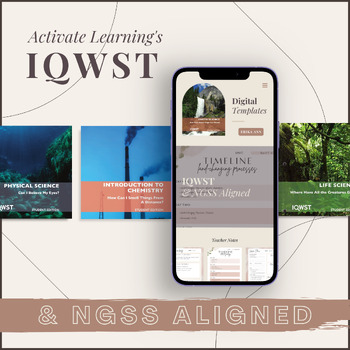BUNDLE Teacher Notes with Teacher Clarity for IQWST Sci 6
- Zip
Products in this Bundle (16)
showing 1-5 of 16 products
Description
⭐️⭐⭐️ IQWST Sci 6 Teacher Notes BUNDLE⭐️⭐️⭐️
Don’t miss out on an entire year’s worth of tips and strategies with teacher clarity outlines for your Science 6 classroom!
Just started implementing Activate Learning’s IQWST in your middle school classroom and need some help facilitating inquiry-based learning? Sounds like you need my notes* for teaching IQWST Sci 6 (all 4 units!!). From someone with 4+ years of experience teaching this curriculum, this 210-page complete set has everyone you need to be leading inquiry-based learning like a pro!
This bundle includes listings that are digital templates using Canva, a free, easy-to-use website. The templates include sub-unit timelines, teacher clarity outlines, and day-by-day walkthroughs. All pieces are editable in your internet browser. Thanks to Canva, there is no additional software required.
Low Prep Required. Simply print and go!
Activate Learning’s IQWST + NGSS aligned
TEACHER NOTES BUNDLE FOR SCI 6 INCLUDES THE FOLLOWING LEARNING PROGRESSIONS
-- The Sight Model
-- Brightness + Shadows
-- Light Ray Behaviors
-- Types of Light Rays
IC1 How Can I Smell Things from a Distance?
-- The Odors Model
-- States of Matter
-- Matter Changing States
-- Building Blocks of Matter
ES1 How Does Water Shape Our Earth?
-- Intro to Geology
-- The Hydrological Cycle
-- Land-Changing Processes
-- The Rock Cycle
LS1 Where Have All the Creatures Gones?
-- Populations + Interactions
-- Energy, Structures, and Functions
-- Organism Relationships
-- Stable Ecosystems
*These are simply my lesson plans, notes, and tips that I've developed throughout my experience teaching this curriculum. This listing references vocabulary, activities, and readings from the curriculum but does not include any files from the curriculum. This listing is not acting as the curriculum itself, nor is it intended to act as a replacement.



